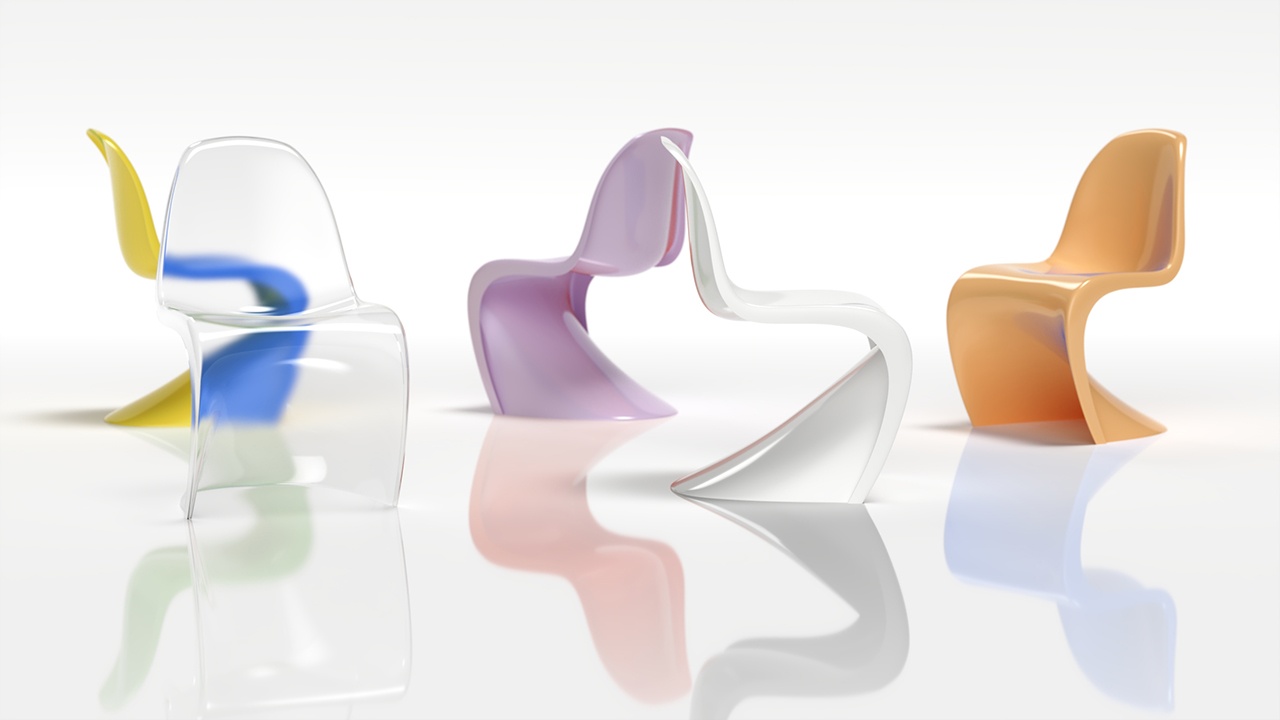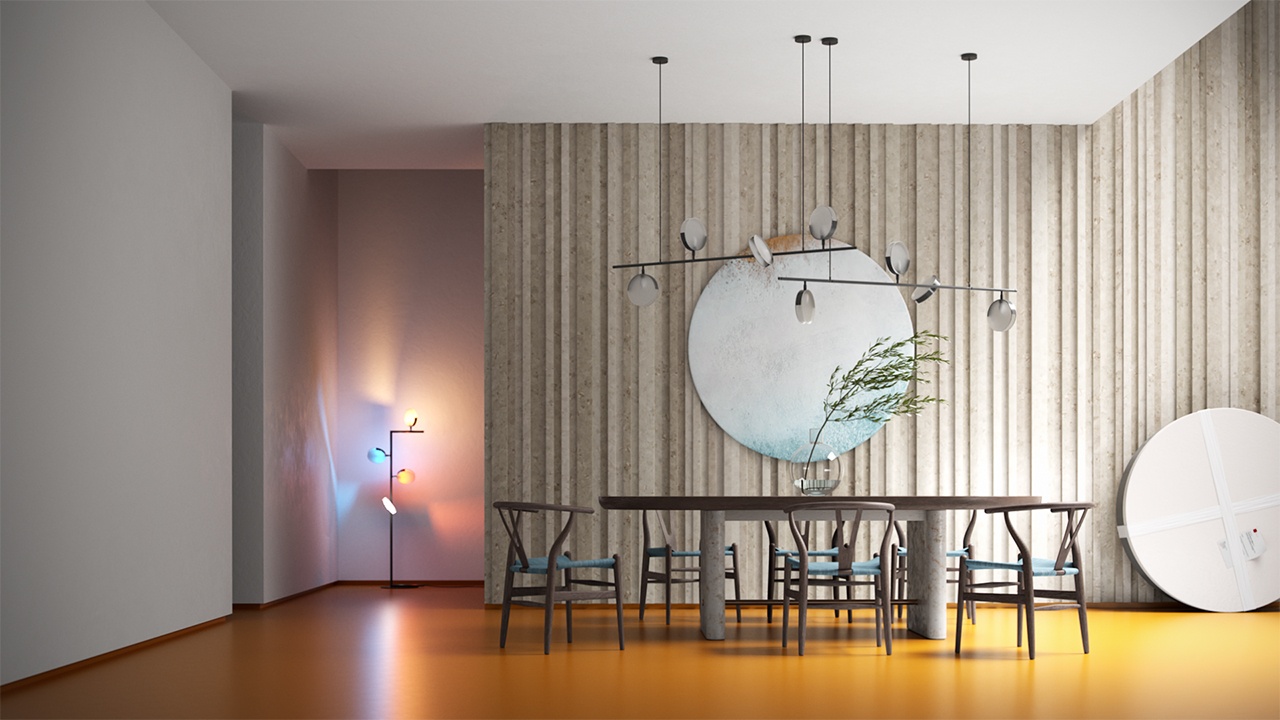This page provides information about the Override Material in V-Ray for Blender.
Overview
The Override Material is a utility material provided with the V-Ray renderer. It allows a surface to look different depending on whether it is seen through reflections, refractions, or GI.
With this material, you get fine controls over the color bleeding, reflections, refractions, and shadows of the objects.
The example rendered here shows the use of the Override Material to create some interesting reflections and refractions of the chairs. Notice how the yellow chair changes its color when seen through a refractive material. The reflections of the colored chairs, seen on the floor, display variation of the colors as well.
Input Sockets
This section lists input sockets that are not found in the Properties tab but only as inputs for the node.
Base Material – Input socket for the material V-Ray uses while rendering the object.
GI Material – Input socket for the material V-Ray uses while calculating the GI solution. See the Gi Material override example below for more information.
Reflect Material – Input socket for the material V-Ray uses when the object is seen in reflections.
Refraction Material – Input socket for the material V-Ray uses when the object is seen in refractions.
Shadow Material – Input socket for the material that is used to render shadows cast from the object.
Properties
Enable the GI material – When enabled, the specified GI Material overrides the Global Illumination in the scene.
Enable the reflection material – When enabled, V-Ray uses the specified material when the object is seen in reflections.
Enable the refraction material – When enabled, V-Ray uses the specified material when the object is seen in refractions.
Enable the shadow material – When enabled, V-Ray uses the specified material for the object's shadows.
Example: Using GI Material Option
This example explores how the orange color coming from the vivid orange colored floor leaks through and colors the rest of the objects in the scene (walls, skirtings, etc.).
In the first image, it is visible that all walls, objects, and the ceiling are rendered in some light orange color. This is due to the color bleeding generated by the GI calculations.
In the second image, the scene is rendered with a VRayOverride GI material assigned to the floor. The VRayOverrideMtl is set with a concrete gray V-Ray material for the GI Material and with the default orange material for the Base Material.
So now V-Ray knows that while calculating the GI, it has to use the GI material, and during rendering, it uses the Base material. The result of that is quite different from the previous render as the color bleeding is gone.
For a much more complex scene, with lots of different geometry, shaders, textures, etc., using the VRayOverride material can be very helpful.





